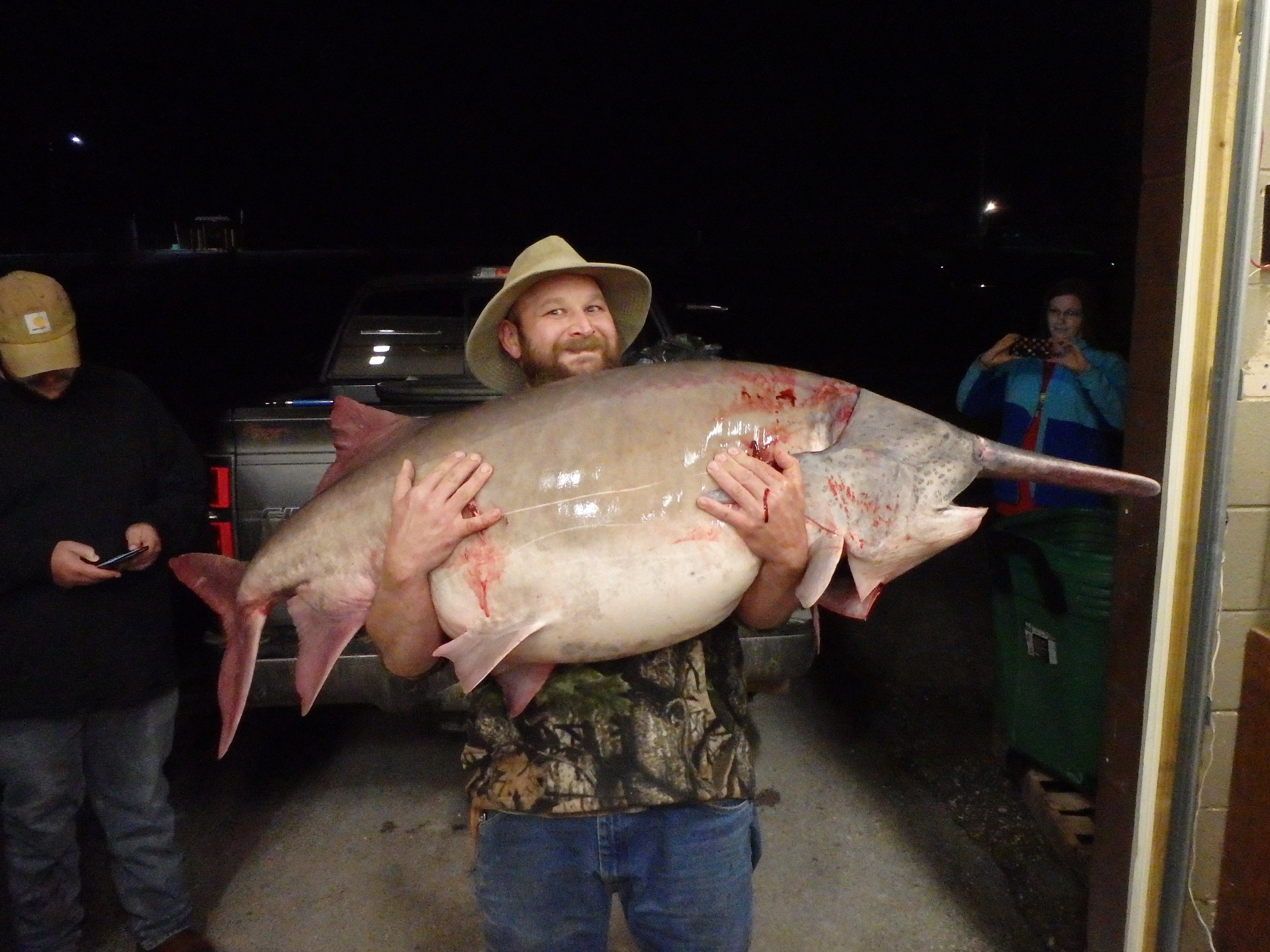When paddlefish snagging season begins in Missouri, most folks use a boat or hire a guide to target the huge plankton-eating fish on big lakes.
But with a bit of luck, anglers can snag paddlefish from shore or from a kayak right inside the city limits of Springfield, just below the Lake Springfield dam.
“My biggest was 65 pounds, but I've seen 80 pounders caught there,” says Springfield fisherman Galen Martin, who has snagged paddlefish below the dam for the past 10 years.
“I caught that 65-pounder from my kayak,” he recalled. “It pulled me around a bit in the current. Their first couple of runs are epic!”
Paddlefish snagging season begins today (March 15) and runs through April 30. A new rule goes into effect today, raising the minimum length of a legal paddlefish from 24 inches to 32 inches, measured from the eye to the fork of the fish's tail. The daily limit is two paddlefish, with a possession limit of four.
Martin said the water below Lake Springfield dam is a surprisingly good spot to snag paddlefish, especially when the water rises after a big rain. During spawning season, paddlefish migrate from Table Rock Lake and move upstream in the James River, which flows past Springfield's south side.

When they hit the Lake Springfield dam, they can go no farther, making them relatively easy to target with the right gear.
Martin said the big fish tend to stay in the deeper water along the bluff next to the dam or congregate below the dam where spillwater has carved deeper channels.
“When the water is low like it is now you can sometimes see them swimming upstream, but that's really pretty rare,” he said. “Usually you're fishing blind. With higher water, there's more fish.
Martin usually snags paddlefish from a kayak, though he also has cast and snagged from the small island just downstream from the dam.
Last year, he watched a family try to snag paddlefish from the island, with no luck. He offered his experience and soon a young teenage girl was hooked up with a big paddlefish, also called spoonbill because of their long, flat noses.
“I had to hold on to her to keep the fish from pulling her in,” Martin said. “She eventually was able to land it.”
Because paddlefish eat tiny plankton, they don't strike lures or bait, although a Halltown fly fisherman accidentally caught and landed a 50 pounder at the dam in 2017 after a grueling fight.
Usually, the only way to catch them is by casting or trolling a line with up to three big treble hooks, with a 6-ounce lead weight tied below.
Snaggers rhythmically jerk the fishing pole back in hopes a hook will make contact.
Because paddlefish can get so big — the Missouri record weighed 140-pounds, 9 ounces when hauled from Table Rock Lake in 2015 — Martin said snaggers typically use fairly heavy 20- to 40-pound test line.

“When you're casting, you let it sink then haul back and try to rip it over the top of the fish,” he said.
Snaggers don't always connect with a paddlefish. Often the lead weight or hooks get stuck on rocks and the angler has to break the line. Martin said that part of snagging for paddlefish can be frustrating, but there's a silver lining for him.
“At the end of the season, I'll get my waders and go down there when the water's real low,” Martin said. “I'll pick up 25 to 50 hooks and a lot of lead weights still attached to them. I haven't had to buy gear in a long time.”
Paddlefish have no scales and their slippery skin is very similar to that of a catfish. They yield a lot of white meat, which Martin said he likes to smoke on a grill.
Paddlefish are native to Missouri, originally thriving in the state's big rivers — the Missouri, Mississippi and Osage. The Missouri Department of Conservation raises paddlefish in hatcheries and stocks the fish in Table Rock Lake, Lake of the Ozarks and Harry S. Truman Reservoir.
Paddlefish are considered prehistoric creatures since they have changed very little over millions of years. Paddlefish, which can live 30 years or more, were designated Missouri's official aquatic animal in 1997.

